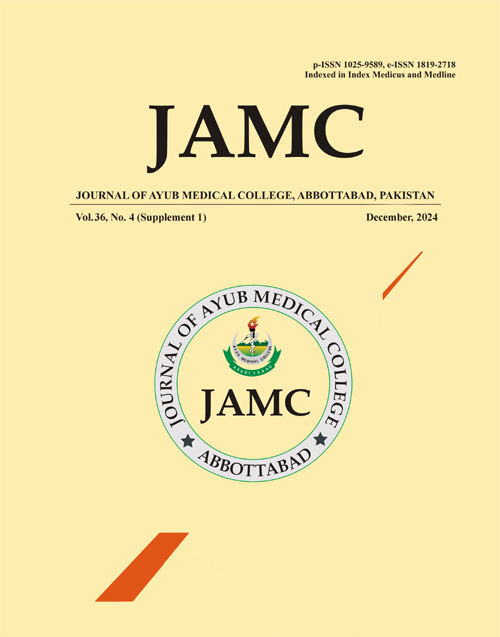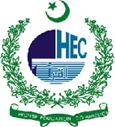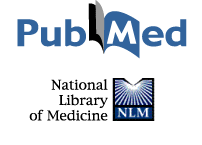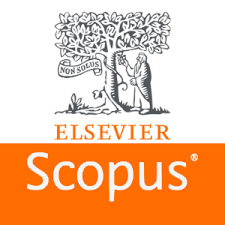EXPERIENCE OF INITIATING MICROVASCULAR SURGERY WITH LIMITED RESOURCES
DOI:
https://doi.org/10.55519/JAMC-S4-14057Keywords:
free flap, microvascular surgery, limited resources, head and neck reconstructionAbstract
Background: Microvascular surgery is an imperative part of reconstructive armamentarium. At times, reconstructing a post-surgical or post traumatic defect is not potentially possible with loco-regional flaps and good function and aesthetics can be achieved with free tissue transfer. For last few decades, the revolutionary microvascular reconstructive techniques have brought a paradigm in the field of plastic surgery, rendering major debilitating defects to be dealt with, which were previously considered inoperable. Methods: This study is conducted at the department of Plastic Reconstructive surgery, Liaquat University of Medical and Health Sciences, Jamshoro from February 2022 to July 2023. The aim of this study is to share our experience and lessons learnt initiating microvascular surgery at a tertiary care center in the city of Hyderabad, Pakistan.
References
1. Corbitt C, Skoracki RJ, Yu P, Hanasono MM. Free flap failure in head and neck reconstruction. Head Neck 2014;36(10):1440–5.
2. Su WF, Hsia YJ, Chang YC, Chen SG, Sheng H. Functional comparison after reconstruction with a radial forearm free flap or a pectoralis major flap for cancer of the tongue. Otolaryngol Head Neck Surg 2003;128(3):412–8.
3. Ragbir M, Brown JS, Mehanna H. Reconstructive considerations in head and neck surgical oncology: United Kingdom National Multidisciplinary Guidelines. J Laryngol Otol 2016;130(S2):S191–7.
4. Mäkitie AA, Beasley NJ, Neligan PC, Lipa J, Gullane PJ, Gilbert RW. Head and neck reconstruction with anterolateral thigh flap. Otolaryngol Head Neck Surg 2003;129(5):547–55.
5. Ali RS, Bluebond-Langner R, Rodriguez ED, Cheng MH. The versatility of the anterolateral thigh flap. Plast Reconstr Surg 2009;124(6 Suppl):e395–407.
6. Shenaq SM, Klebuc MJ, Vargo D. Free-tissue transfer with the aid of loupe magnification: experience with 251 procedures. Plast Reconstr Surg 1995;95(2):261–9.
7. Koshima I, Fukuda H, Yamamoto H, Moriguchi T, Soeda S, Ohta S. Free anterolateral thigh flaps for reconstruction of head and neck defects. Plast Reconstr Surg 1993;92(3):421–8.
8. Mosahebi A, Disa JJ, Pusic AL, Cordeiro PG, Mehrara BJ. The use of the extended anterolateral thigh flap for reconstruction of massive oncologic defects. Plast Reconstr Surg 2008;122(2):492–6.
9. Mäkitie AA, Nigel JP, Neligan PC, Lipa J, Gullane PJ, Gilbert RW. Head and Neck Reconstruction with Anterolateral Thigh Flap. Otolaryngol Head Neck Surg 2003;129(5):547–55.
10. Soutar DS, Scheker LR, Tanner NS, McGregor IA. The radial forearm flap: a versatile method for intra-oral reconstruction. Br J Plast Surg 1983;36(1):1–8.
11. Vaughan ED. The radial forearm free flap in orofacial reconstruction. Personal experience in 120 consecutive cases. J Craniomaxillofac Surg 1990;18(1):2–7.
12. Kim JH, Rosenthal EL, Ellis T, Wax MK. Radial forearm osteocutaneous free flap in maxillofacial and oromandibular reconstructions. Laryngoscope 2005;115(9):1697–701.
13. Chen YB, Chen HC, Hahn LH. Major mandibular reconstruction with vascularized bone grafts: indications and selection of donor tissue. Microsurgery 1994;15(4):227–37.
14. Hidalgo DA. Fibula free flap mandible reconstruction. Microsurgery 1994;15(4):238–44.
15. Yang KC, Leung JK, Chen JS. Double-paddle peroneal tissue transfer for oromandibular reconstruction. Plast Reconstr Surg 2000;106(1):47–55.
16. Wei FC, Seah CS, Tsai YC, Liu SJ, Tsai MS. Fibula osteoseptocutaneous flap for reconstruction of composite mandibular defects. Plast Reconstr Surg 1994;93(2):294–304.
17. Cordeiro PG, Disa JJ, Hidalgo DA, Hu QY. Reconstruction of the mandible with osseous free flaps: a 10-year experience with 150 consecutive patients. Plast Reconstr Surg 1999;104(5):1314–20.
18. Serletti JM, Deuber MA, Guidera PM, Reading G, Herrera HR, Reale VF, et al. Comparison of the operating microscope and loupes for free microvascular tissue transfer. Plast Reconstr Surg 1995;95(2):270–6.
19. Wei FC, Seah CS, Tsai YC, Liu SJ, Tsai MS. Fibula osteoseptocutaneous flap for reconstruction of composite mandibular defects. Plast Reconstr Surg 1994;93(2):294–304.
20. Wax MK. The role of the implantable Doppler probe in free flap surgery. Laryngoscope 2014;124(Suppl 1):S1–12.
Downloads
Published
How to Cite
Issue
Section
License
Copyright (c) 2024 Aamna Sanober Farooqui, Shahzad Shaikh, Samra Irshad Pirzada, Zaheer Ahmed Qasmi

This work is licensed under a Creative Commons Attribution-NoDerivatives 4.0 International License.
Journal of Ayub Medical College, Abbottabad is an OPEN ACCESS JOURNAL which means that all content is FREELY available without charge to all users whether registered with the journal or not. The work published by J Ayub Med Coll Abbottabad is licensed and distributed under the creative commons License CC BY ND Attribution-NoDerivs. Material printed in this journal is OPEN to access, and are FREE for use in academic and research work with proper citation. J Ayub Med Coll Abbottabad accepts only original material for publication with the understanding that except for abstracts, no part of the data has been published or will be submitted for publication elsewhere before appearing in J Ayub Med Coll Abbottabad. The Editorial Board of J Ayub Med Coll Abbottabad makes every effort to ensure the accuracy and authenticity of material printed in J Ayub Med Coll Abbottabad. However, conclusions and statements expressed are views of the authors and do not reflect the opinion/policy of J Ayub Med Coll Abbottabad or the Editorial Board.
USERS are allowed to read, download, copy, distribute, print, search, or link to the full texts of the articles, or use them for any other lawful purpose, without asking prior permission from the publisher or the author. This is in accordance with the BOAI definition of open access.
AUTHORS retain the rights of free downloading/unlimited e-print of full text and sharing/disseminating the article without any restriction, by any means including twitter, scholarly collaboration networks such as ResearchGate, Academia.eu, and social media sites such as Twitter, LinkedIn, Google Scholar and any other professional or academic networking site.










